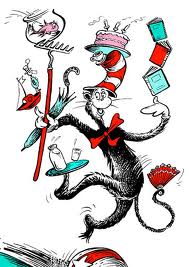I read the most amazing things about giraffes on my way home from work earlier this week. For instance, did you know that giraffes come across as being silent to us humans, but they're probably communicating using infrasound?
Giraffes are apparently unable even to warn their companions of the presence of predators such a lions, although they may pick on behavioural cues such as nervousness and whether their companions are startled.
This is very strange indeed. People also assume giraffes to be social animals because they are so often found in what appears to be family groups. Yet these groups are extremely unstable – giraffes join and leave them apparently at random.
Biologist John Doherty from The Reticulated Giraffe Project, speculates that perhaps they communicate using vocalisations below the frequency range of our hearing, in this month’s BBC Wildlife magazine.
“They are certainly big enough to provide infrasonic signals and it has been suggested that they do so by means of Helmholtz resonance – the noise produced by blowing across the open neck of a bottle.”
This would be consistent with the way in which elephants use infrasound for long distance communication.
Maybe that’s part of why giraffes come across as thinkers. One of my first jobs involved working as a copywriter on the farm owned by Johnny Morris of Animal Magic fame. I know anthropomorphism (the attribution of human feelings and characteristics to animals) is frowned upon by some, but Johnny’s impression of a giraffe was very funny. If only I could find it on YouTube!
I gave Johnny lifts to a few speaking engagement and he used to entertain me with stories all the way there and back. We'd usually be invited to a dinner in his honour afterwards and I then had to ferry a tipsy octogenerian all the way home. He did like his whisky our Johnny, despite being diabetic!
I gave Johnny lifts to a few speaking engagement and he used to entertain me with stories all the way there and back. We'd usually be invited to a dinner in his honour afterwards and I then had to ferry a tipsy octogenerian all the way home. He did like his whisky our Johnny, despite being diabetic!
Anyway, I digress...back to the giraffes and what makes them so great. Size usually poses problems for big herbivores but giraffes have made it a virtue. Most large herbivores have such high calorific content that they must eat abundant but often poor-quality food – dry grass or touch leaves – whereas smaller species can pick and choose, favouring the best foods such as berries and seeds.
In extreme environments such as African savannahs where food availability varies greatly with the season, this is reflected in the energy budgets of buffalos and other big animals, which can breed only in times of plenty.
In extreme environments such as African savannahs where food availability varies greatly with the season, this is reflected in the energy budgets of buffalos and other big animals, which can breed only in times of plenty.
But giraffes are different. Quite apart from their height – which enables them to munch the foliage of taller, deeper-rooted and thus more drought-resistant trees – their fine tapering muzzles, mobile lips and long prehensile tongues allow them to be unusually picky. Add to this a highly efficient digestive system (even by ruminant standards) and the result is ‘supercharged’ giraffes with enough of an energy surplus to breed all year round.
A giraffe’s height also poses a problem though. A fully grown giraffe can raise of lower its head by up to 5m and might pass out with the blood rushing away were it not for a dense network of fine capillaries (the ‘rete mirabile’) that cushions its brain against rapid changes in blood pressure. Quite an amazing biological adaptation really. Although it has its limits. Giraffe actually sleep sitting bolt upright otherwise they might die from a lack of blood circulation to their brains!
To Doherty, megaherboivores such as giraffes represent echoes of a younger planet, where giant life forms were commonplace. "When they are extinct such creatures become objects of wonder – think of our fascination with mammoths, giant sloths, and especially, dinosaurs."
I can completely understand what he means. When I was travelling across Kenya and Tanzania I went on a walking safari and it was all so reminiscent of Jurassic Park. These majestic animals move across the savannah with such grace and the odd comic moment when they shuffle awkwardly and splay out their legs to drink. It looks like they might very well get stuck and never get back up.
Sadly, my favourite giraffes – the reticulated ones – are endangered. They look quite different to Africa’s other eight giraffe subspecies due to their signature hide pattern: dark chestnut polygons divided by a complex tracery of narrow white lines.
In 1998, there were thought to be 28,000 giraffes in northern Kenya, Ethiopia and Somalia, but this figure has plummeted by 80% in only 10 years. They inhabit a volatile area characterised by growing human population, poverty, habitat degradation and drought, regional conflicts, overstretched security forces and a widespread availability of automatic weapons.
They’re tempting targets as they yield large amounts of meat and some pastoral groups value them highly as trophies and for their hides, tail hair and bone marrow.
Who could do such a thing to such a majestic animal? Although it’s easy for me to say that as I don’t face starvation or privation. Thinking about this, I must do something to support The Reticulated Giraffe Project.

















